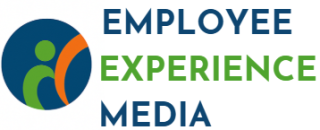
Understanding the Importance of Onboarding in Nursing
The Integral Role of Onboarding in Nursing
In the fast-paced realm of healthcare, effective onboarding is essential not just for seamless integration of the employee into their new role, but also for maintaining the high standards of patient care. This orientation process can make a significant difference in how well new hires adapt to your hospital or clinic's company culture and team dynamics. Considering the unique challenges of nursing, onboarding becomes all the more crucial.
By laying a solid foundation, employee onboarding sets new hires on a successful path, boosting both individual performance and overall organizational efficiency. The aim here is to create a training environment that meets the specific needs of nursing staff, whether they are fresh graduates or seasoned practitioners entering a new facility.
An optimized onboarding experience ensures that new employees are well-equipped to handle the demands of their role, thereby minimizing turnover rates and enhancing employee engagement. A well-structured orientation program will include detailed insights into daily processes, healthcare protocols, and patient interaction procedures, typically delivered through a carefully curated presentation.
Whether you are designing a comprehensive PPT presentation or a pdf download, incorporating an onboarding checklist can serve as a guide for both the employees and the management. By focusing on the key objectives of your company's onboarding orientation strategy, you build the groundwork for a positive nursing orientation experience. This approach not only caters to the immediate needs of new team members but also aligns them with long-term organizational goals.
Key Elements of a Pre-Nursing Onboarding Presentation
Structuring Your Onboarding Presentation
Creating a comprehensive and engaging pre-nursing onboarding presentation can set the stage for successful employee integration. A well-structured presentation covers critical aspects of the onboarding process and effectively communicates company culture and expectations. Consider including the following elements:- Introduction: Start by welcoming the new hires to the company. Provide an overview of the orientation program and its objectives. This section sets a positive tone for what is to come.
- Company Overview: Outline the company's mission, vision, and values. Explain how these elements influence the daily operations and culture. This helps new employees to align with the company's goals and values.
- Nursing Team Dynamics: Introduce the structure of the nursing team, highlighting roles and responsibilities. This prepares new nurses for the team environment they will be joining.
- Employee Onboarding and Training: Describe the onboarding checklist and training process. Include details about mandatory training sessions and any available resources that can support new hires in their initial weeks.
- Interactive Sessions: Engage your audience with interactive elements, such as Q&A sessions or discussions, to encourage participation and address any immediate questions new nurses might have.
- Presentation Materials: Utilize a variety of formats like PowerPoint, PDF, or Google Slides. Providing a downloadable version or a completely editable PDF template allows employees to refer back to important information at their convenience. Offering sample templates of what is expected can also serve as a useful guide.
Engaging New Nurses: Strategies for Effective Communication
Strategies to Foster Engagement and Communication
Creating an engaging onboarding presentation is crucial for successfully integrating new nurses into the team. Effective communication is at the heart of this process, aiding in reducing turnover rates and enhancing job satisfaction. Here are some strategies to achieve this:- Interactive Presentations: Avoid traditional lecture-style onboarding. Use PPT with interactive elements such as quizzes and polls. This encourages active participation and makes handling a large employee orientation a more engaging process.
- Storytelling: Share real-life scenarios where nursing staff successfully navigated challenges. This technique not only keeps new hires attentive but also introduces them to the company culture and team dynamics.
- Clear Communication Channels: Establish open lines of communication from day one. Utilize onboarding checklists and encourage new nurses to ask questions freely. Tailoring the message according to the audience can make the presentation more relatable and effective.
- Leverage Technology: Use tools like Google Slides or PPT PowerPoint templates to create visually appealing slides. These templates can simplify complex processes, enabling a smooth transition for new hires into their roles.
- Personalized Content: Customize orientation programs with templates that reflect the specific needs of the electronic medical record system or hospital protocols, helping the nursing team feel prepared and valued from the start. Templates should include essential information and be completely editable for flexibility.
Utilizing Technology in Onboarding Presentations
Harnessing the Power of Technology
Integrating technology into the onboarding process is not just a trend, but a necessity for modern organizations, particularly in the field of nursing where precision and clear communication are paramount. A well-structured PowerPoint presentation can be an effective tool for introducing new hires to company culture, protocols, and expectations. When you're designing this critical piece of the orientation program, consider using a completely editable PowerPoint template that can be tailored to the specific needs of your nursing team.- Standardization Across Departments: Utilizing templates ensures consistency in messaging and aesthetics, which can facilitate a smoother transition for new employees. It’s crucial to have a set slide format so that all relevant information is uniformly presented.
- Interactive and Engaging Content: Today's onboarding presentations should be more than just static slides. Integrate interactive elements, such as embedded videos or quizzes, to make the sessions more engaging for new hires. Google Slides or ppt PowerPoint can be excellent platforms for these features.
- Accessibility and Convenience: Providing the presentation in an easily downloadable format, such as a PDF, ensures that new nurses can access the material anytime, whether at the hospital or home. This flexibility supports continuous learning and self-paced orientation.
- Incorporating Multimedia and Visuals: Visual aids play a crucial role in enhancing understanding and retention. Use diagrams, flowcharts, and images to elucidate complex processes, turning dense information into digestible content.
Adapting to Technology-Driven Trends
The landscape of employee onboarding is steadily evolving with technological advancements. Staying informed about new tools and practices can help your organization adapt its onboarding plan to meet future demands effectively. For instance, considering virtual reality (VR) for simulation-based nursing training can provide a realistic environment for skill development and error recovery. Remember, the technology you choose should align with the company culture and the specific requirements of the nursing orientation. By leveraging digital tools thoughtfully, your organization can boost employee engagement, streamline the orientation program, and ultimately enhance the overall employee experience.Measuring the Success of Onboarding Programs
Evaluating Success Through Metrics and Feedback
Measuring the success of onboarding programs in nursing is crucial to ensure the effective integration of new hires into the healthcare environment. By evaluating employee onboarding presentations, companies can determine how well new nurses absorb critical information and adapt to the team. There are several approaches to gauge the effectiveness of the onboarding process.
- Set Clear Objectives: Establish specific goals for your onboarding orientation, such as proficiency in company policies, understanding of nursing protocols, and familiarity with the team dynamics.
- Feedback Mechanisms: Use surveys and feedback forms to collect input from new employees about the onboarding orientation program. This can highlight areas that may need improvement and affirm what is working well.
- Performance Metrics: Track certain metrics such as the time it takes for a new employee to reach full productivity, job satisfaction levels, and the retention rate of new hires. These data points are instrumental in assessing the effectiveness of the employee orientation process.
- Comparison with Industry Standards: Compare your onboarding program metrics against industry benchmarks to ensure your orientation process is on par with best practices.
Implementing a set of slides using a completely editable PowerPoint presentation template allows for a structured approach to communicate and track these metrics efficiently. The ppt PowerPoint can be updated to incorporate this feedback, making it a living document that evolves with the company culture.
Continuous Improvement: Adapting Onboarding for Future Needs
Continuous Adaptation and Future-proofing Onboarding Practices
To ensure that your onboarding process remains effective and relevant in a continually evolving work environment, it's crucial to incorporate strategies for continuous improvement. The ever-changing landscape of nursing demands an onboarding system that can adapt and grow with new challenges and opportunities. One key element is the regular review and update of the orientation program and materials. Consider the following steps to maintain an effective onboarding experience:- Feedback Loops: Implement regular feedback sessions with new hires and experienced employees. This enables the collection of insights on the onboarding process from a variety of perspectives, informing necessary changes to presentations and templates.
- Utilizing Technology: Keep your PowerPoint and Google Slides templates completely editable to allow seamless updating. Incorporate new technological advancements into your onboarding slides. This might include interactive training modules or videos that can be downloaded in PDF format for offline reference.
- Benchmarking Best Practices: Use sample templates and bench-marking data from other successful companies to compare and enhance your own onboarding program. This helps to align with industry standards and adapt best practices.
- Customized Orientation Content: Tailor your onboarding checklist and templates to reflect continuous changes in the company culture and industry regulations. Customized content ensures that the orientation process is always pertinent and engaging for new nursing team members.
- Training and Development: Develop ongoing training sessions for the onboarding team. This helps them keep up-to-date with the best practices in employee engagement and orientation strategies, ensuring smooth hire onboarding.













